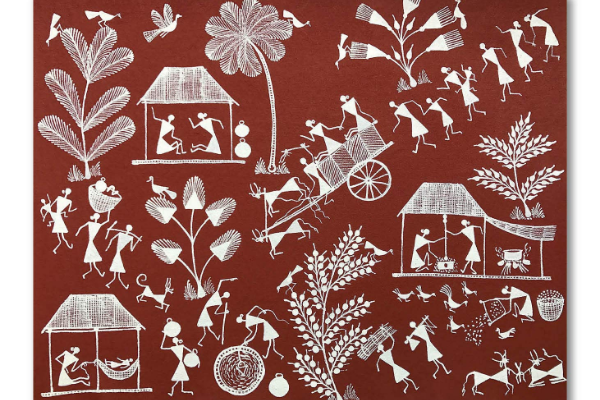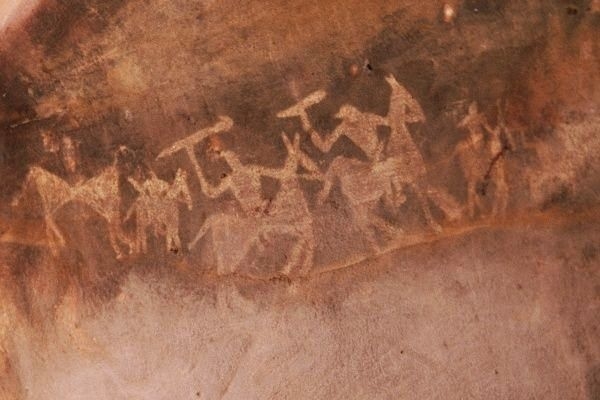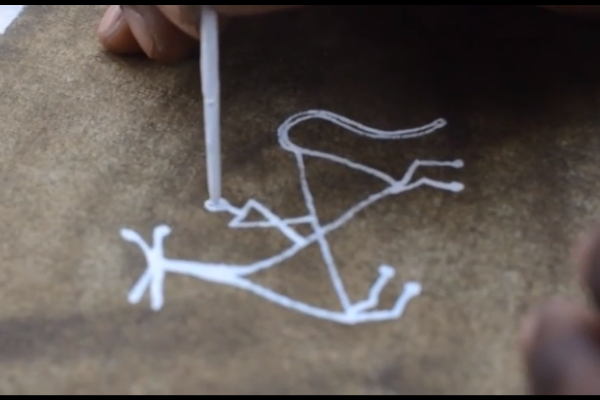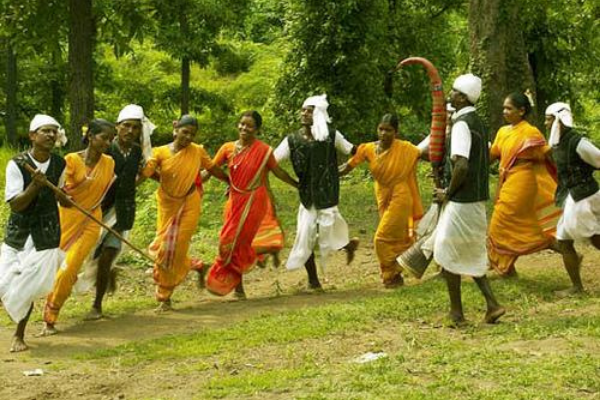What is Warli Painting and Where Does It Come From?
30 Sep 2020 14:33:11
All of us have sometime or the other seen a specific kind of painting with a terracotta coloured background with stick figured human drawings painted in white. It’s fresh colours and its simplistic depiction of human activities instantly catches the attention.

But do you know where it comes from?
Warli is one of the biggest Adivasi tribe found in India. They reside in the mountainous region of Maharashtra, northen Palghar district, Nashik, Dhule and along the Maharashtra-Gujarat border. They speak the unwritten Varli (Konkani and Marathi influence) language and follow their own unique lifestyle and norms which have their roots in the Hindu teachings and religion.
The Warli community’s existence dates back to 2500 or 3000 BCE. The Warli paintings that we see today can also be found in the caves of Bhimbetka in Madhya Pradesh which is a home to many prehistoric wall arts right from the Stone Age Man.

Warli paintings are made with minimalistic materials and colours, showcasing minimalistic design with the use of minimalistic shapes. They include shapes like circle, triangle and a square. The circle is said to represent the sun and the moon, while the triangle shape is inspired by the mountains. But, the square is said to indicate a sacred enclosure or a piece of land. The red/terracotta background in the paintings are actually walls made with a mixture of branches, earth and red brick that gives it the red colour. The white pigment is made with three simple ingredients and that is rice flour and water with gum as a binder. Tribal people don’t need art supply stores and expensive paint brushes to make something beautiful. They just chew a bamboo stick to make the fibres stick out and act like a brush.

Although Warli painting is used as a decorative element to make an area/wall look prettier, in the Warli community, Warli paintings are made only on special occasions like weddings, celebrations etc. Since the warli community believes in Mother Nature as their reliogion, the elements of nature are often focal points depicted in the paintings.
These paintings depict social gatherings and events like hunting, farming, fishing and religious ceremonies. People and animals are represented by two inverse triangles joined at their tips: the upper triangle depicts the torso and the lower triangle the pelvis.
One of the centre of attention for depictions in warli painting is their traditional art form: Tarpa Dance

Image source: silvassaonline.in
In a tarpa dance, Men and women entwine their hands and move in a circle around the tarpa player. Tarpa is a trumpet like instrument and the dancers are never supposed to face their backs to the tarpa player.
Many of us know and admire this art form for its simplistic visuals, but now it is time to not only recognize it for the heritage that is for India, but also preserve its sanctity!
-Shravya Kulkarni